Well, we decided not to attend the Myiajima Island Oyster Festival as planned. We were told it would be extremely crowded – on the train, on the ferry, and at the festival, so we decided to wait to go another time. The weather has turned off cold again (after a teasing warm spell) so it’s not too much fun to be out in the icy wind right now.
Instead, and in honor of George Washington, we joined Stan’s friend, Ikue (who works at the school library) and several other teachers & their families for some points of interest around Hiroshima. Lisa Mauldin, the school nurse, and her son Michael and daughter Jane rode up with us. They are all delightful and we had a fun trip. We met up with the others at the Hiroshima Japan Mint, one of only three in Japan. The Hiroshima mint makes only coins. It was fascinating, and we learned lots of Japanese history. For instance, it is against the law to pay for something using more than 20 of the same denomination coin. Japan makes coins in denominations of 1, 5, 10, 50, 100 and 500 yen. (You simply move the decimal over 2 places to the left to see their approximate US equivalent, i.e., 100 yen = $1.) The coins are all really beautiful – very artistic – and especially designed to be difficult to counterfeit, and for ease in identification by feel. Japan once considered putting the likeness of the Emperor on their coins, as other countries do with their leaders, but since the Emperor was considered a god, they decided it would be disrespectful because people would be touching his portrait. Instead, they have flowers on one side, and the number denomination on the reverse in English and Japanese. This mint also makes official decoration badges and award medals of honor. In the museum, there is a large automated machine into which you can insert a coin, and it will be certified to be genuine. As you watch, it is weighed (with water), measured, and its metal content tested. When finished, your coin is returned with a printed certificate of authenticity.
After visiting the mint, we had an authentic Japanese lunch, which was delicious and beautifully served on many different patterns of exquisite bone china, both Japanese and English. Ikue ordered for us, and then told us what was in each dish as it arrived. First, of course, we received the hot cloth with which to wash our hands. Then we were served an appetizer dish with thin fried white fish strips, steamed rape plant (canola) mixed with dressing like a small salad, and small cubes of potatoes with sea urchin sauce, which looked like large pieces of corn or hominy). The second course was a small cup of thin clam chowder with several tiny chopped vegetables, one of which was burdock, kind of like rutabaga. The next course was spinach and shrimp quiche, with very thin flaky crust (more like phyllo dough); then hot egg custard (not sweet) with chunks of Portobello mushroom. The main course was rice, a large grilled sardine (whole), assorted pickles, red miso soup (fish base with tofu), and steamed spinach. Presentation is very important in Japan. Ikue says “We eat with our eyes” so it was very beautiful, as well as delicious. Of course we were also served hot green tea throughout the meal. Then we were served coffee and homemade strawberry ice cream for dessert. The coffee is usually very strong and just a few sips in little demitasse cups, served with a pitcher of real cream. There are never seconds on coffee, for it is very expensive in Japan. Now, this may sound like a lot of food, but Japanese dishes and portions are very small – most servings are only 2-3 bites. There is always a separate dish or bowl for each item served and usually, it has a saucer underneath, sometimes with a lace paper doily in between. Ikue was counting the dishes as we were served, and she counted over 20 before losing count. With coffee and ice cream, you are given a small silver spoon, and with custard and soups you get a small, fat china spoon, as well as chopsticks used for eating everything else. One more interesting point. The bathroom (of course I have to report on this!) was tiny and unisex, but did have a heated seat (I’m always so relieved when I don’t have to squat . . .). The sink was a hi-tech bowl on top of a triangle-shaped pillar stuck in a corner – very ultra-modern and space conservative. The faucet was automated, and not only did you get water (cold, of course!) when you placed your hands under it, you also got a small light that went off and on with the water.
Our last stop was a soy sauce factory. I never knew there were so many varieties of soy sauce! This factory makes 5 different varieties, but there are many more. Each is used for a special purpose, and has a little different flavoring and taste. We first viewed a movie (all in Japanese) then donned our hairnets and actually toured the factory where the soy sauce is mixed and bottled. Soy sauce is made by mixing steamed soy beans with roasted wheat, and a special seed starter which grows to form a dry mash called koji, and salt. It takes 6 months to make and ferment the finished product. Something else we didn’t know: it’s always a good idea to use soy sauce on raw sushi and sashimi. The amino acids in the soy sauce “clean up” any bacteria that might be in the fish. After touring the factory, we went to the gift shop and were served hot green tea and cubes of tofu that we could dip into different flavors of soy sauce. (You may know that tofu – which is packed with protein – has practically no taste of its own.) It was hard to make up our minds which one we liked best, so we bought a variety pack of all 5 flavors. We also shared a soy sauce ice cream cone. I thought it would be yucky, but it was quite delicious – an interesting combination of sweet and salty. Japanese ice cream is not too sweet, and it’s creamy like custard.
It snowed off and on all day in Hiroshima as the sun kept peeking in and out of the clouds – beautiful big fluffy flakes that floated around, but melted when they hit the ground. As we drove back home to Iwakuni, we reflected on what an interesting, delicious, and educational day we’d had, and how fortunate we are to have a friend like Ikue, who is so willing to share her beautiful country with us.
Thursday, February 24, 2005
Subscribe to:
Post Comments (Atom)















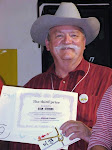

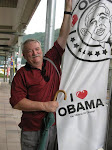
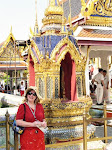
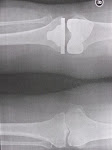

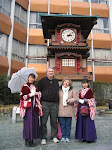
No comments:
Post a Comment